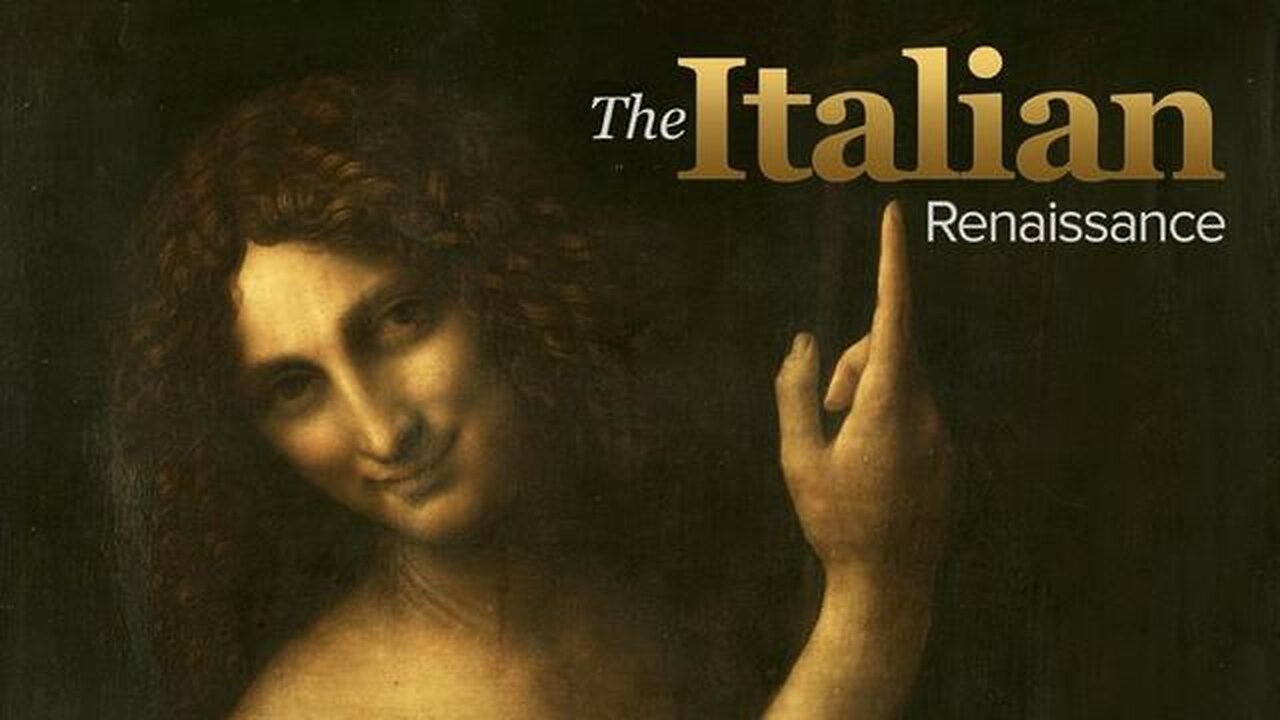Premium Only Content

The Italian Renaissance | Castiglione and The Book of the Courtier (Lecture 17)
Lecture 17: The victory of monarchies in Italy and the examples of the aristocratic societies of the French and Spanish invaders of Italy changed the character of the later Italian Renaissance. The new model of behavior was the ideal courtier serving a wise and virtuous prince. The emphasis in Humanist education shifted toward elite caste marks, increasingly reflecting aristocratic values and courtly and military prowess. Furthermore, the loss of Italian liberty meant that public life changed, with less social mobility available and little call for rhetorical skill in government. As early as the regime of Cosimo de’Medici (d. 1464) in Florence, there had been a growing interest in Platonic ideas. These stressed the dignity of the individual soul; the value of knowledge, including the arcane and the mystical; and the power of love. In the charged and courtly world of 16th-century Italy, these elements created a new perspective in art, learning, and social intercourse best exemplified in Baldassare Castiglione and his Book of the Courtier.
Castiglione (1478−1529) was born into a noble family in Mantua but served Guidobaldo, son of the celebrated Federigo, duke of Urbino. Recovering from an injury, he became attached to the duchess Elisabetta Gonzaga (d. 1526) and a familiar of the duke. The treachery of Cesare Borgia drove the ducal family into exile and scattered the court, but it was reconstituted after their restoration following the fall of the Borgia. This is the environment of The Book of the Courtier, written over a period of many years but printed only at the end of Castiglione’s life. In it, the ideals of a perfect society are discussed over four nights of dialogue. The role of women was central and the place of love assured, but the love was the platonic version in which the soul sought knowledge of the divine through contemplation. The book became a guide for how Italians could sustain their culture through manners and learning, despite their loss of liberty and confidence following the foreign invasions.
Primary Source Texts:
Baldessare Castiglione, The Book of the Courtier.
Secondary Sources:
Sergio Bertelli, Italian Renaissance Courts.
Lecture 18: https://rumble.com/v4y3ui2-the-italian-renaissance-women-in-renaissance-italy-lecture-18.html
-
 30:51
30:51
The Great Courses
2 months agoThe Age of Pericles | An Elegy to Athens (Lecture 24)
114 -
 1:12:43
1:12:43
Adam Does Movies
7 hours ago $0.10 earnedMoviegoers Are Singing Now! + Lilo & Stitch + Sonic 3 - LIVE!
17.8K1 -
 1:26:05
1:26:05
Donald Trump Jr.
10 hours agoRegime Media Imploding: What’s Next for MSNBC? Plus Michael Knowles & Alex Marlow | TRIGGERED Ep.194
181K165 -
 37:26
37:26
Glenn Greenwald
7 hours agoGlenn Takes Your Questions: On Trump's Cabinet, The G20 Summit, and More | SYSTEM UPDATE LOCALS SPECIAL
57.8K20 -
 LIVE
LIVE
We Like Shooting
14 hours agoWe Like Shooting 586 (Gun Podcast)
142 watching -
 52:14
52:14
Uncommon Sense In Current Times
9 hours ago“Pumpkin Pie Politics: Bridging the Thanksgiving Divide to Protect The Family"
2.62K -
 1:01:28
1:01:28
The StoneZONE with Roger Stone
4 hours agoWhy Jack Smith Owes Americans Millions of Dollars for Fake Investigations | The StoneZONE
24K3 -
 LIVE
LIVE
Tundra Gaming Live
8 hours ago $0.23 earnedThe Worlds Okayest War Thunder Stream
313 watching -
 2:22:30
2:22:30
WeAreChange
6 hours agoBREAKING: Biden Admin Could SEND NUKES To Ukraine?! UK & France To Send Troops? w/ Roger Stone
41.8K15 -
 1:35:49
1:35:49
The Officer Tatum
6 hours agoLIVE: Jack Smith DROPS Case, Elon Musk BREAKS MSNBC | OT Show EP 14
76.5K75